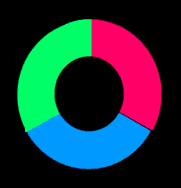color filter
Color filters are optical filters that separate brightness signals into their color components. Depending on their use, color filters can be large- area colored glass discs that rotate as a color wheel in projectors or fine-pixel filter arrays, as in stripe filters or Bayer filters, that are located directly in front of the CMOS sensor or CCD sensor of a digital camera.
Color filters are used in digital cameras and video cameras, but also in scanners, displays and projectors. Well-known color filters placed in front of image sensors in digital and video cameras are stripe filters, Bayer filters, and interference filters. Dichroic filters are used in displays and projectors, the latter also using a rotating color wheel. In scanners, the brightness signals are split into their color components via prisms.
In addition to the color filters mentioned above, which are used to divide the colors, there are also color filters that are placed in front of the lens of digital cameras and filter out certain color components or reflections. They include polarizing filters, IR filters and UV filters. The latter are color filters that block UV light with wavelengths below 400 nm and allow visible light and infrared light to pass through.

